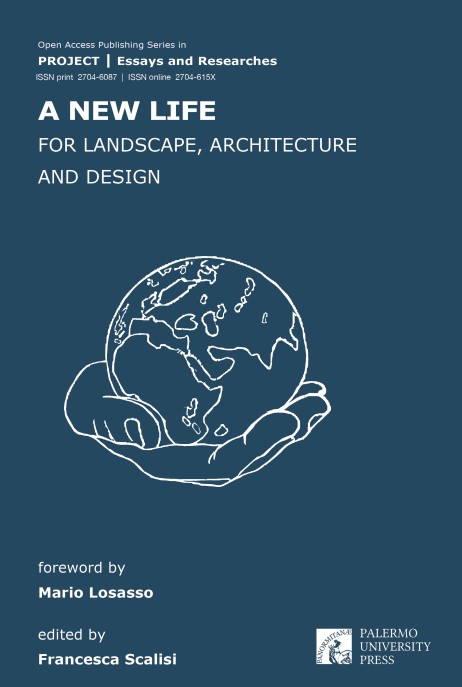
Title
After lockdown. Light regenerative set-up and re-design of the public space
DOI
doi.org/ 10.19229/978-88-5509-291-3/6112021
Keywords
exhibit and public design, DIY, lockdown, temporariness, low-strategies
Abstract
The permanent side effects of the lockdown, due to the spread of Covid-19, left our cities empty and silent leading us to a reflection on their future and ours, in terms of public spaces for us to inhabit and regenerate. This essay describes a few case studies and their unique modalities of adopting ‘tactical’ set-up strategies, through bottom-up procedures and top-down solutions. These case studies could be an example of regeneration of the post-Covid-19 public space, according to an innovative idea of the ‘culture of living’ which gives a ‘new life’ to marginal or neglected places. This contribution wants to outline some distinctive features of the strategic actions which can be useful to those who deal with the enhancement, upgrading and management of places of common interest.
Section
Design | Essays & Viewpoint
pp. 192-211
Author(s)
Roberto Bianchi
Author(s) Biography
Roberto Bianchi, Architect and PhD, is an Associate Professor of Industrial Design at Universitas Mercatorum (Italy) and Teacher for the Master of Exhibit & Public Design and for the Course of Innovative Materials and Technologies at ‘Sapienza’ University of Rome (Italy). He studies topics linked to the relation between project, techniques and innovative materials. Mob. +39 339/41.85.877 | E-mail: roberto.bianchi@unimercatorum.it
References
Agnoletto, M. (2020), “Spazio pubblico – Progettare il vuoto”, in Domus, n. 1052, pp. 12-13.
Anderson, C. (2013), Makers – Il ritorno dei produttori – Per una nuova rivoluzione industriale, Rizzoli Etas, Milano.
Baricco, A. (2021), Quel che stavamo cercando – 33 Frammenti, Feltrinelli, Milano.
Cano, J. L. (2020), Urbanità spontanee, Libra, Melfi.
Delgado, M. (2007), Sociedades movedizas – Pasos hacia una antropologia de las calles, Anagrama, Barcelona.
Florida, R. (2003), L’ascesa della nuova classe creativa, Mondadori, Milano.
Harrouk, C. (2021), “Public Spaces and Challenges of Covid-19 – UH-Habitat’s Small-Scale Urban Responses in Vietnam, Bangladesh and India”, in ArchDaily, 24/02/2021, [Online] Available at: archdaily.com/957524/public-spaces-and-the-challenges-of-covid-19-un-habitats-small-scale-urban-responses-in-vietnam-bangladesh-and-india?utm_medium=email&utm_source=ArchDaily% 20List&kth=1,401,294 [Accessed 12 May 2021].
Iacovoni, A. (2009), Playscape, Libria, Melfi.
Lévis-Strauss, C. (1964), Il pensiero selvaggio, Il saggiatore, Milano.
Mari, E. (2002), Autoprogettazione?, Corraini, Mantova.
Molinari, L. (2020), “Esseri urbani”, in Il Magazine del Sole24Ore, 12/11/2020. [Online] Available at: ilsole24ore.com/art/esseri-urbani-ADQfgu1 [Accessed 12 May 2021].
Nicolin, P. (2020), Architettura in quarantena, Skira editore, Milano.
Orizzontale (2020), Vuoto 2 – Controverso, Creative Commons, Roma.
Piano, R. (2014), “Diversamente politico”, in Vv. Aa. (2014), Periferie – Diario del rammendo delle nostre città, vol. 1, pp. 12-16. [Online] Available at: docplayer.it/21365956-Periferie-diario-del-rammendo-delle-nostre-citta.html [Accessed 20 April 2021].
Rykwert, J. (2015), “Imparare dalla strada”, in Lotus, n. 158, pp. 102-113.
Rodenigo, V. (2021), “L’architettura è il modello della socialità”, in Il Giornale dell’Arte, 20/05/2020. [Online] Available at: ilgiornaledellarte.com/articoli/l-architettura-il-modello-della-socialit-/136070.html [Accessed 20 May 2021].
Stefanelli, B. (2021), “Le città tornano laboratorio – La necessità degli abitanti è il nuovo tessuto connettivo”, in Pianeta 2021 | Corriere della Sera, 24/03/2021, p. 7. [Online] Available at: corriere.it/pianeta2020/21_marzo_23/citta-tornano-laboratorio-necessita-abitanti-nuovo-tessuto-connettivo-a9179216-8993-11eb-8483-12afb3b5bb7e.shtml [Accessed 20 April 2021].
Tato, B., Vallejo, J. L., Castillo, E. and Rizzetto, M. (2020), “Interactive design for responsive environments – Mettere le persone al centro del processo di progettazione | Placing people at the center of the process”, in Techne | Journal of Technology for Architecture and Environment, vol.19, pp. 24-33. [Online] Available at: corriere.it/pianeta2020/21_marzo_23/citta-tornano-laboratorio-necessita-abitanti-nuovo-tessuto-connettivo-a9179216-8993-11eb-8483-12afb3b5bb7e.shtml [Accessed 20 April 2021].

